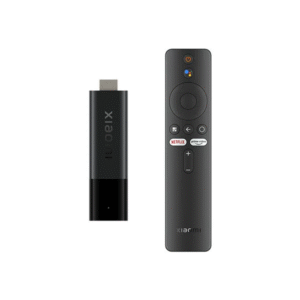In 2025, choosing the right internet provider means juggling speed, reliability, and affordability. With so many packages available, spectrum plans have become a major talking point for households seeking practical solutions. The challenge isn’t just picking a provider—it’s understanding the real costs behind promotional offers, hidden fees, and long-term contracts.
When families look at their monthly budgets, internet service ranks just as important as electricity or water. But unlike utilities, internet costs can vary widely, depending on which plan you choose. Spectrum markets itself as a provider that balances value with performance, but how true is that in practice? By looking beyond flashy marketing and comparing plan structures, you can separate the must-haves from the unnecessary extras. That’s the real key to staying connected without paying more than you should.
Understanding Price vs. Value in Spectrum’s Services
Comparing internet services is often less about speed alone and more about what you’re truly paying for over time. Spectrum’s pricing structure positions itself as competitive, with transparent costs and fewer hidden surprises than some smaller competitors. While introductory offers make the plans attractive, households must also consider what the standard rates look like after promotions expire.
Spectrum aims to deliver a balance: reliable speed across multiple devices, decent customer support, and package flexibility. The value comes when households match their actual usage—whether that’s streaming, gaming, or remote work—with the right plan. Paying for the top tier without needing it can hurt budgets, while underestimating usage can lead to frustration. Evaluating both performance and predictability is where Spectrum tends to stand out.
Making Internet Affordable: Student Discounts
One of Spectrum’s more consumer-friendly options is its discount programs. Among these, spectrum student discounts help ease the financial strain for families with college students or young adults living away from home. This program provides lower monthly rates or package add-ons at reduced costs, making high-speed access more attainable for those balancing tuition, rent, and daily expenses.
While some providers limit eligibility to select campuses or regions, Spectrum has expanded its discount availability to cover a broader student population. For households where multiple people are online simultaneously, these discounted packages can make a meaningful difference in monthly expenses without compromising speed or reliability.
Accessibility and Availability Across Communities
Internet access is no longer a luxury—it’s a necessity for work, school, and everyday living. Spectrum’s reach covers many urban and suburban areas, giving more households reliable access compared to smaller providers. Availability is often a deciding factor when families choose an ISP, since not every competitor has wide coverage.
For many communities, having the option to stay with a single provider for years without frequent outages or disruptions is worth more than shaving a few dollars off the bill. Spectrum has invested in expanding its coverage zones, giving households stability in their choices without constantly worrying about switching providers.
Evaluating Flexibility in Plan Options
Households differ in size, usage, and budget. Spectrum acknowledges this by offering multiple packages designed for different lifestyles. Flexibility is key: whether you need higher speeds for heavy streaming or a more modest plan for casual browsing, there’s likely an option that fits.
This flexibility is especially important in households where internet demands change over time. Families can upgrade or downgrade as needed, avoiding the feeling of being locked into one rigid plan. Compared with some competitors that only offer limited tiers, Spectrum’s structure gives customers room to grow without overcommitting upfront.
Where Free Internet Fits Into the Picture
For low-income families, cost remains the biggest barrier to staying connected. That’s why spectrum free internet programs are an essential part of its offerings. Often tied to federal assistance initiatives, these options ensure eligible households can access reliable internet without monthly bills.
While the speeds on free programs may not match premium plans, they are more than sufficient for basic needs like online classes, remote work tasks, or everyday browsing. Programs like these highlight Spectrum’s attempt to bridge the digital divide—something that other ISPs are only beginning to prioritize.
Customer Experiences and Hidden Costs
Beyond advertised prices, real-world customer experience often tells the fuller story. Spectrum has improved its support channels over the years, offering assistance through calls, apps, and live chat. Customers frequently cite the predictability of service as a strong point compared to some regional competitors.
That said, equipment rental fees and installation costs can still add to the monthly bill if customers don’t bring their own devices. The good news? These fees are generally clear from the start, unlike hidden charges that some competitors spring on their users later. For many households, predictability is worth just as much as raw pricing.
Conclusion: Choosing Spectrum in 2025
The internet is no longer optional—it’s a household staple. Evaluating providers in 2025 comes down to balancing performance, affordability, and transparency. With spectrum plans, families get multiple options designed for varied needs, while students benefit from targeted spectrum student discounts. Low-income households can apply for spectrum free internet, ensuring connectivity is not just a privilege but a practical reality.
And for families looking to maximize their spending, spectrum internet bundles combine services like TV and phone for added savings. By focusing on both long-term value and day-to-day reliability, Spectrum continues to provide a compelling option in the competitive ISP market.






